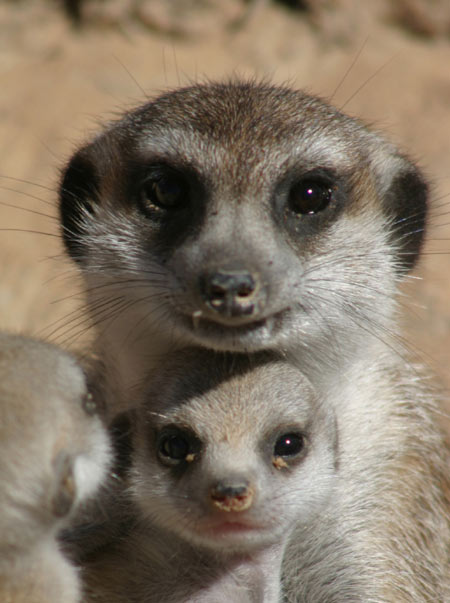Hunting 101: Meerkats Teach Scorpion Dismemberment

Attention all meerkat pups: Scorpion hunting 101 is now in session.
Instead of letting their young figure out how to hunt dangerous scorpions on their own, older meerkats collect and disable the prey so the youth can learn how to deal with the feisty food.
The discovery, detailed in the July 14 issue of the journal Science, is one of the few examples of teaching in animals.
Meerkat classroom
Wild meerkats (Suricata suricatta) live in fairly barren environments in southern Africa where finding food is no easy chore. Some of their favorite meals consist of scorpions, which are capable of killing an adult human. While adult meerkats have some immunity to scorpion stings, the arachnid's large pincers can still inflict plenty of damage.
Meerkat hunters rapidly bite their prey's head or abdomen to disable its attack, but young pups lack the experience for the task. Instead of allowing pups to learn by trial and error and risk receiving a potentially life-threatening sting, other meerkats older than three months take the pups under their wing to show them how its done.
"When pups are really young, helpers find and kill a scorpion and bring it to the pup," said study co-author Alex Thornton of the University of Cambridge in the United Kingdom.
Sign up for the Live Science daily newsletter now
Get the world’s most fascinating discoveries delivered straight to your inbox.
The helpers respond to the pups' begging calls, and as the cries sound more and more mature, the teachers increase the difficulty of the lesson. Instead of a dead scorpion, teachers remove the stinger from a live scorpion and present it to the pups. At this stage in the pupil's tutelage, if the scorpion escapes, the teacher nudges it back for a second try.
Once the pups have mastered disabled prey, teachers bring an unaltered scorpion to the classroom for their students to tackle.
Helper benefits
While the lessons help pups grow into proficient hunters, the helpers don't seem to derive any direct benefits from teaching. In fact, it's a costly activity, since valuable hunting time is spent disabling prey and presiding over the lessons.
"I think the adults definitely get something out of this," Thornton told LiveScience. "For teaching to evolve, there have to be benefits that outweigh the short term costs of teaching."
Thornton suggested some potential benefits:
- A dominant male and female pair are the parents to nearly 80 percent of a meerkat group, so individuals tend to be very closely related. It's in a helper's best interest to make sure their cousins, and the family genes, survive.
- Teaching accelerates the pups' learning curve, the study showed. By providing a lesson to a young pup, helpers avoid spending more time in the future teaching a slow-learning young adult.
- Each pup that survives to adulthood and increases the group's numbers makes a helper's life easier.
"Group size in cooperative breeding animals is fantastically important," Thornton said. "If you're in a large group, there's less chance of predation, the animals put on more weight, and individuals are more physically fit."
Rare teaching experience
Humans teach, as do ants. But otherwise there is very little evidence of teaching—which is defined as a helper recognizing a student needs help and the student improving thanks to the instruction—in the animal world.
Thornton believes the lack of other cases could be because it is difficult to study and prove in the wild.
For example, he said, another group recently did a study on cheetahs, but it wasn't clear if the cubs were becoming better hunters through their lessons or just because they were growing up. There have also been studies documenting learning in chimpanzees, where one chimp watches another perform a task, but it's not clear if one chimp is directly instructing the observer.
"The difficulty is in disentangling teaching from just learning as the animal gets older," Thornton said. "However, I don't think that means teaching is uncommon, and it's probably more widespread than people think."









